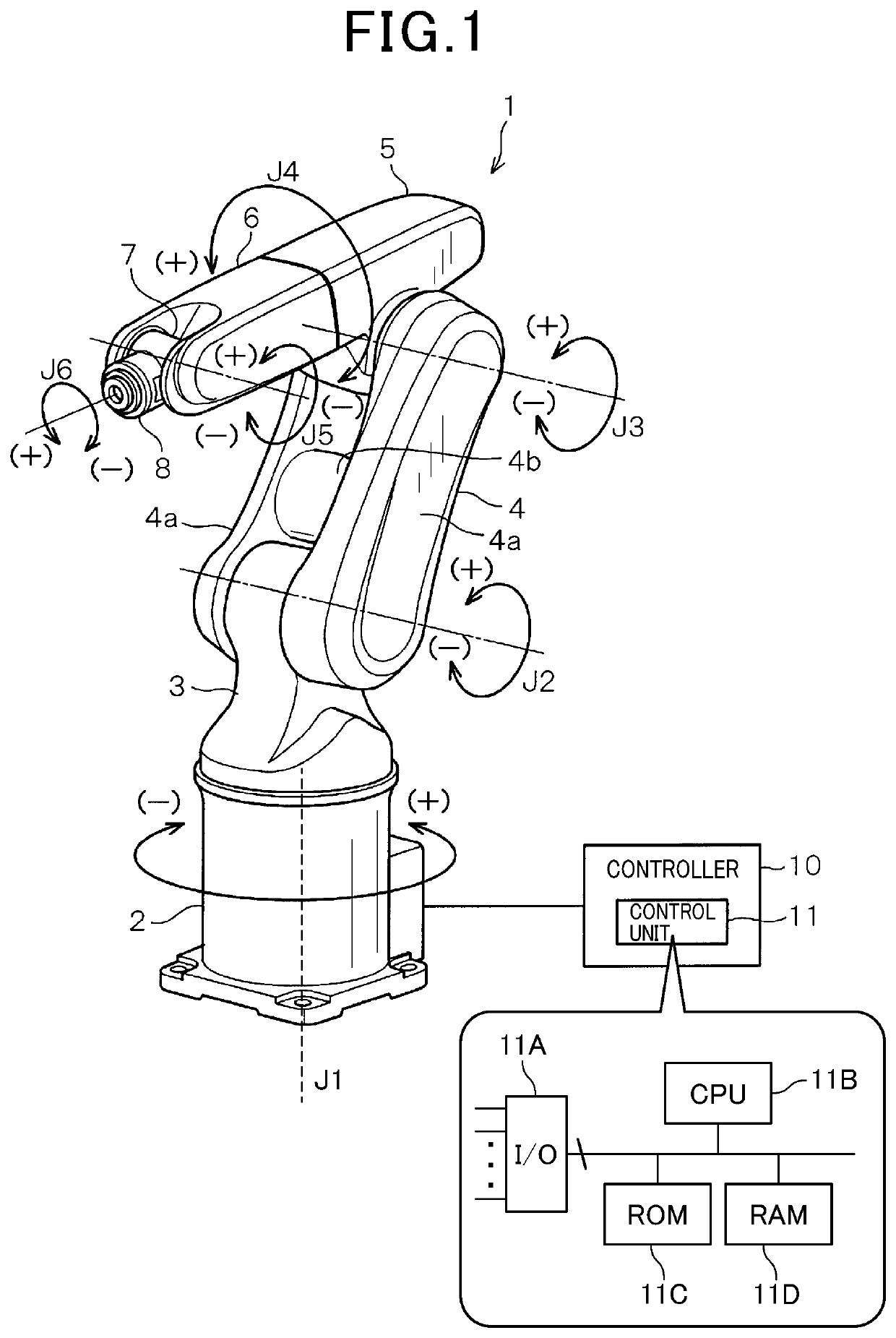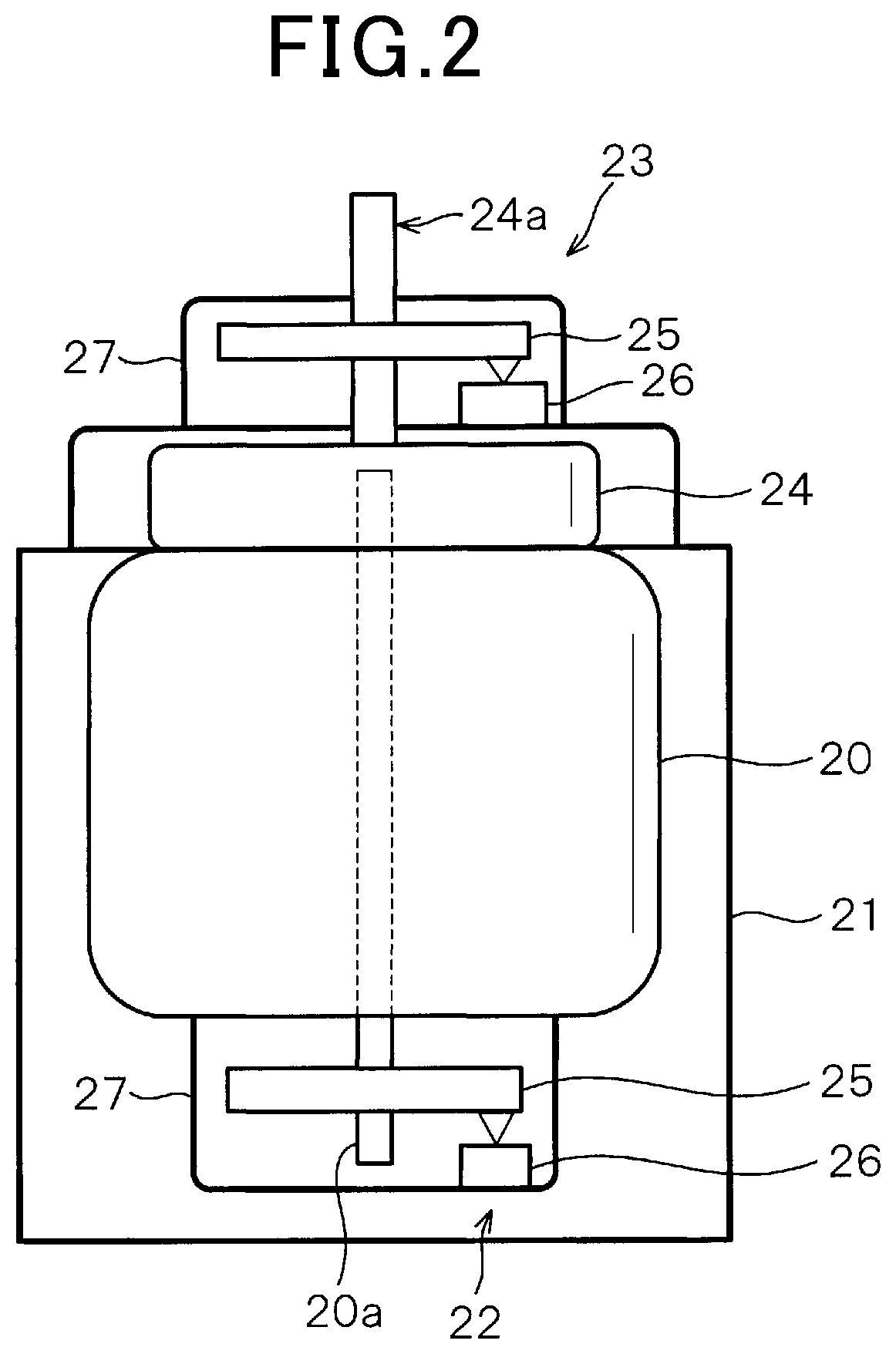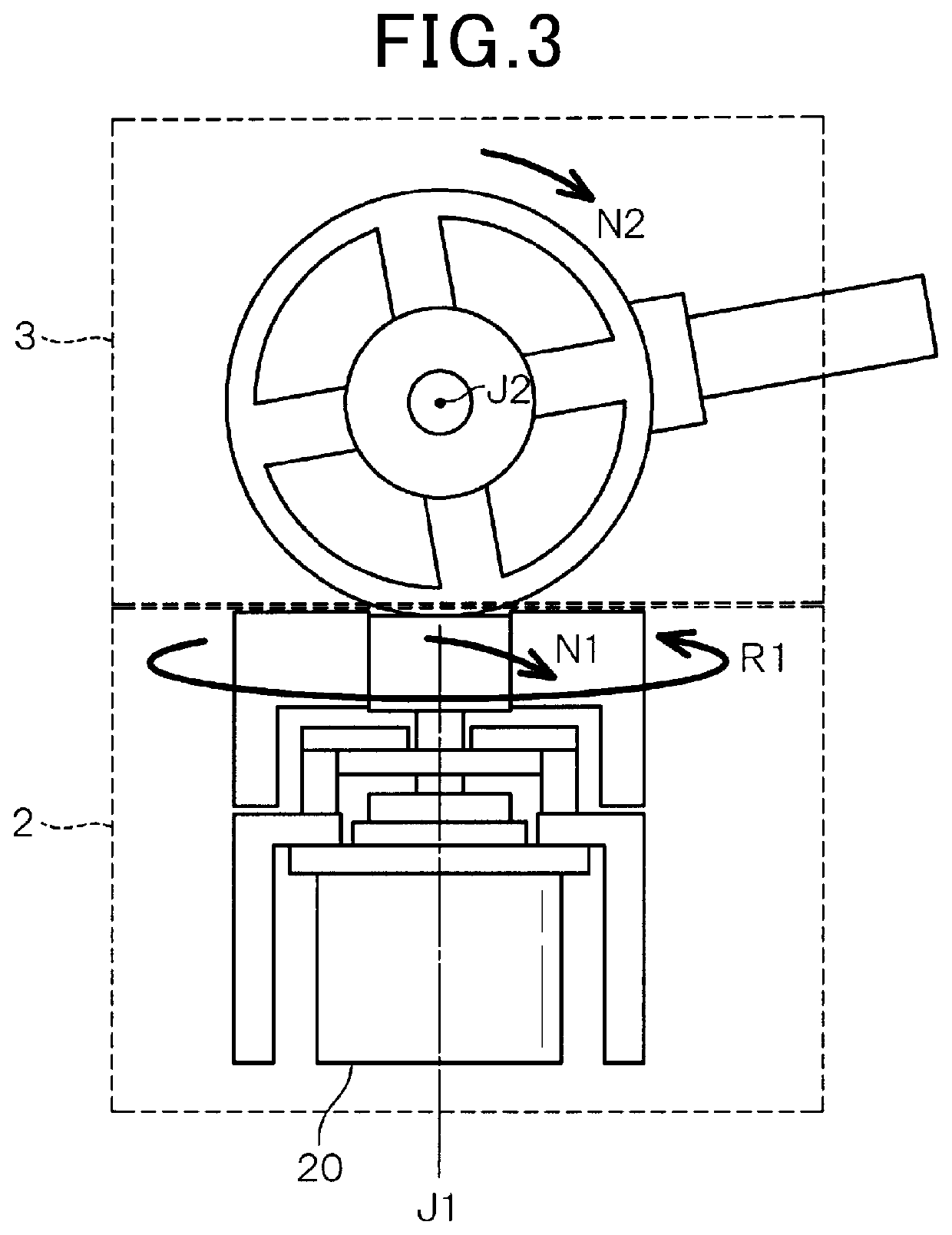Method and apparatus for correcting motions of robot
a robot and motion correction technology, applied in the direction of programmed manipulators, instruments, programme control, etc., can solve the problems of excessive force and loss of accurate alignment made under control, and achieve high accuracy, high accuracy, and high accuracy
- Summary
- Abstract
- Description
- Claims
- Application Information
AI Technical Summary
Benefits of technology
Problems solved by technology
Method used
Image
Examples
Embodiment Construction
[0029]With reference to the drawings, various embodiments will be described.
[0030]Referring first to FIGS. 1 to 8, a description will be given of a method and an apparatus for correcting mechanical deflection caused in a robot, according to an embodiment. As will be described later, these method and apparatus are embodied by a controller that controls a robot.
[0031]FIG. 1 is a schematic perspective view illustrating an overall configuration of a robot 1, according to an embodiment of the present disclosure. As shown in FIG. 1, the robot 1 having a known configuration as a vertical articulated robot is connected to a controller 10. The controller 10 serves as a correction apparatus having a correction function unique to the present disclosure.
[0032]The controller 10 is provided with a control unit 11 that includes a microcomputer, not shown. The control unit 11 includes, as an example, an input / output interface 11A, a CPU (central processing unit) 11B, a ROM (read only memory) 11C st...
PUM
 Login to View More
Login to View More Abstract
Description
Claims
Application Information
 Login to View More
Login to View More - R&D
- Intellectual Property
- Life Sciences
- Materials
- Tech Scout
- Unparalleled Data Quality
- Higher Quality Content
- 60% Fewer Hallucinations
Browse by: Latest US Patents, China's latest patents, Technical Efficacy Thesaurus, Application Domain, Technology Topic, Popular Technical Reports.
© 2025 PatSnap. All rights reserved.Legal|Privacy policy|Modern Slavery Act Transparency Statement|Sitemap|About US| Contact US: help@patsnap.com



